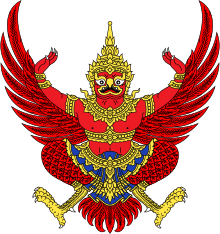Foreign aid to Thailand
 |
| This article is part of a series on the politics and government of Thailand |
|
|
|
|
|
Foreign Aid to Thailand On July 31, 2003, Thailand repaid its outstanding obligations under a standby arrangement made with the International Monetary Fund designed to help it recover from the 1997 Asian Financial Crisis. The payment was made four years ahead of schedule, reflecting Thailand's achievement of macroeconomic and balance-of-payments stability.
Since 2002, Thailand is no longer an Economic aid recipient. Instead, Thailand contributed $60 million in economic aid to the neighboring countries in 2005.
Foreign aid history
During the Vietnam War period Thailand, along with other US allies such as Cambodia, received considerable amounts of US economic aid and military subsidies.[1]
From the early 1980s onwards internal problems in Myanmar have led to large numbers of people seeking refuge in Thailand. Various agencies, including the European Commission's Humanitarian Aid department, have helped to assist the displaced people.[2]
Historically Thailand was one of the biggest recipients of Japanese overseas aid. The bulk of the aid took the form of loans for large-scale infrastructure projects.[3] Japan's government explained its relative generosity by citing friendly relations and Thailand's special problems arising from rapid growth, while some scholars have suggested that Japan’s own business interests were the main motivation.[3]
See also
References
![]() This article incorporates public domain material from the Library of Congress Country Studies website http://lcweb2.loc.gov/frd/cs/.
This article incorporates public domain material from the Library of Congress Country Studies website http://lcweb2.loc.gov/frd/cs/.
- ↑ The Cambridge History of Southeast Asia p. 151] By Nicholas Tarling, Cambridge University Press, 1999
- ↑ Meeting humanitarian needs on the Burma border
- 1 2 Japan’s Positive and Negative AidSanctions Policy Toward AsianCountries: Case Studies of Thailand and Indonesia by Furuoka, Fumitaka